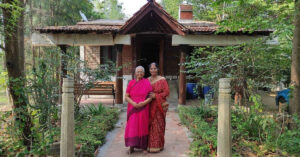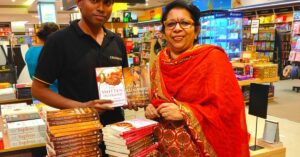Four Women In Their 80s And 90s Who Are Probably More Inspiring Than Any Youth Icon You Know
Whether it is providing medical services to the rural folk in the hills of Uttarakhand or translating works of English into Tamil and vice versa, these inspiring women who are all octogenarians and nonagenarians lead a more active life than most youngsters!

Whether it is providing medical services to the rural folk in the hills of Uttarakhand or translating works of English into Tamil and vice versa, these women who are all octogenarians and nonagenarians lead a more active life than most youngsters! Wonder what it is that keeps them going?
It was a lunch invite that took me to well-known author Jaisree Misra’s home in south Delhi one afternoon. There, I met Dr Daya Misra, who at 81 was radiant, confident and made her way through the throng with verve that is quite uncharacteristic of women her age. She wore no make up, nor had she bothered to colour her hair but there was something quite infectious and inspiring about her.
So, what was it that kept her going? According to this trained medical doctor, her stint in the remote villages around Mukteshwer in Uttarakhand has made all the difference. She says,
“The first time I went to Mukteshwer was on the invitation of a doctor friend of mine who was keen that I work with him in his NGO. When I went there, I simply fell in love with the place and its people and I decided to help out in any way I could. Unfortunately, that possibility did not work out but I stuck around and found work with the Uttarakhand government. I believe that age is no deterrent when one wants to work for the people – as long as one is fit, one can carry on.”
Throughout her one-and-a-half year stint at Mukteshwer – she has come back to Delhi recently – Dr Misra has traversed the tiny lanes of remote hill hamlets, interacting with the locals and giving them much-needed medical assistance.

work in the remote villages that dot Mukteshwer in Uttarakhand. (Courtesy:
Dr Daya Misra)
Was it difficult giving up the comforts of her upper middle-class home in Delhi and making do with the bare minimum in villages?
“There were a few hiccups initially but then things settled down to a rhythm. Of course, I made things work also because I was keen on working in the hills; I knew people there did not have easy access to a medical doctor. I was really happy being amongst them,” she elaborates.
But wouldn’t it have been easier to set up her own clinic in Delhi? “I did not want to work for the money. Moreover, ever since my husband, an Army officer, had passed away I was getting restless in the city and was seeking a change of pace,” she adds.
If Dr Misra is enthused by the spirit of service, a love for colours, images and the arts keeps Kamal Prava Devi hooked on to her paints, palette and books even at the ripe old age of, hold your breath, 98! This nonagenarian is a princess from the erstwhile kingdom of Tripura in the northeast and currently resides in Assam.
Here’s how Shriti Nath, the second daughter of this oldest surviving princess in India, describes her mother today:
“My beautiful and vibrant Mani (mother) dedicated her life to art and architecture. She would either paint all day and night or sing and compose her own songs or write books. She even took up architecture as a hobby! She would stand in the sun with an umbrella and get homes built wherever she owned land. Some of these were later turned into a temple, the first handicrafts centre in Tripura as well as a weaver’s centre. One of her creations is in the National Handicrafts Museum in Delhi.”
There are many facets to Kamal Prava Devi’s personality – some that are well-known, others that has surfaced only within her family. Her foray into politics – she had joined the Swantantra party at one point – saw her attending rallies and giving passionate speeches over the loudspeaker. But at home with her children – three daughters and a son – she was a typical mother, fussing over their studies or taking them out to watch a movie at their very own cinema hall, Roopchhaya, with a fantastic homemade picnic lunch thrown in.
Says Nath, “My mother also had a very pro-woman attitude. I remember, there were many women in her party and she formed a women’s club where they could all get together and talk about politics, children or anything they wanted to share.”
When she felt like being the typical housewife, Kamal Prava Devi would get a stove carried up to her room where she would sit with a recipe book and direct the kitchen staff to cook. The food usually turned out quite good and, at times, rather unusual as well. Then there were days when she would pore over the household accounts – “she wanted every penny to be accounted for”, smiles her daughter.

kingdom of Tripura in the north east, with her family. It is her love for
colours, images and the arts that keeps her hooked on to her paints,
palette and books even at the ripe old age of 98! (Courtesy: Kamal Prava
Dev)
Today, this feisty princess’s daily routine involves hours of painting, reading and writing sitting on her favourite straight back chair. “Mani continues to love challenges and is fiercely independent. In fact, whenever my sister requests her to keep regular hours she glares at her and tells her not to interfere with her independence,” adds Nath.
Being self-reliant is something that is important to Shantha Ramaswami and Vijaya Subramaniam as well. Even today, this duo – friends for 60 years now – draws a lot of energy and encouragement from each other. They share a love for language and literature and enjoy translating works from English to Tamil and vice versa. While some have been published, many have been consigned to the inner recesses of their cupboards.
Shantha and Vijaya began by translating Jane Austen’s ‘Pride and Prejudice’ into Tamil. Among their published works is a novel entitled ‘The Red Moon’. Currently, they are translating Tamil short stories into English as well as awaiting the publication of another novel they have finished translating.
Although Ramaswami resides in Delhi and Subramaniam is located in Chennai, they spend hours over the phone while they are in the middle of their translation work. Says Ramaswami’s daughter, journalist Sudhamahi Regunathan, “My mom is 80, she is diabetic and even had a fractured femur once, but nothing has ever deterred her from her writing.”
In her working avatar, Ramaswami was at the Indian Council of Historical Research later associated with the Towards Freedom Project. She has translated ‘Mohammad of Ghazni’ by Mohammad Habib from English to Tamil and even written on historical figures for the Children’s Book Trust.
Translations have been a constant – “I love to translate. When you read something good in one language you think people who cannot read that language should also derive joy from that piece of literature. There is nothing that makes me feel that my age is a deterrent, except perhaps some health issues at times… and for that I have my friend who keeps me feeling young and energetic,” says Ramaswami with a smile.
At 81, Subramaniam, who has translated Irfan Habib’s ‘Agricultural Relations in Mughal India’ from English to Tamil and has written for various Tamil magazines, shares the same passion. And their friendship is very dear to her, too. Commenting on this long lasting relationship with her college-mate Shantha, she says,
“My friendship has been my motivating factor. We have enjoyed many hours together because of our common love for literature and, later, translation. I would not dream of doing something like this all alone.”
Whether its years of shared camaraderie or a love for the arts or simply a desire to reach out to people, it seems like there’s nothing that can stop these exemplary women from pursuing their passions and inspiring new generations. Age, after all, is only a number.
Liked this story? Have something to say? Write to us: [email protected] or join us on Facebook and Twitter (@thebetterindia).
This story made me
-
97
-
121
-
89
-
167
Tell Us More
We bring stories straight from the heart of India, to inspire millions and create a wave of impact. Our positive movement is growing bigger everyday, and we would love for you to join it.
Please contribute whatever you can, every little penny helps our team in bringing you more stories that support dreams and spread hope.



















